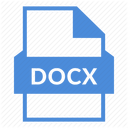Analyzing Exercises in An English Textbook Entitled 'Think' (CEFR A1) Based on Communicative Language Teaching
DOI:
https://doi.org/10.18196/ftl.v10i2.26333Keywords:
CLT, content analysis, textbook, types of communicative exercisesAbstract
Background: Recent studies found that some English textbooks do not support Communicative Language Teaching (CLT) principles that are suitable to be emphasised in teaching with the current emancipated curriculum in Indonesia.
Objective: This study attempts an analysis on exercises in an English textbook entitled “Think” (CEFR A1) by Cambridge University Press for seventh graders. The research was to analyze the extent to which the exercises in the textbook follow the principles of CLT, to explore the teachers’ perspective in the use of textbooks to support CLT, and to describe the students' performances of the communicative classroom activities.
Methods: The research used a qualitative case study method employing document analysis, teachers’ interview and classroom observations in a private Islamic Junior High School in Semarang, Central Java.
Findings: The results show that the textbook strongly promotes communicative competence dominated by task completion activities with a proportion of individual tasks excelling in pair/group works in them.
Conclusion: However, the large number of exercises makes this book seem like a workbook. Although the teachers have adequate understanding of CLT principles and the activities presented in the textbook, the interviews showed that time constraints meant that most of the time, they could only use task completion and role play. The results of the students' performance showed that most of them succeeded in practicing the role play well although the low achievers who had problems in practicing the dialogue needed better scaffolding and time during the tasks completion.
References
Abid, N., & Moalla, A. (2020). The promotion of the good intercultural speaker through intercultural contacts in a Tunisian EFL textbook. Language and Intercultural Communication, 20(1), 37–49. https://doi.org/10.1080/14708477.2019.1676765
Adem, H., & Berkessa, M. (2022). A case study of EFL teachers’ practice of teaching speaking skills vis-à-vis the principles of Communicative Language Teaching (CLT). Cogent Education, 9(1). https://doi.org/10.1080/2331186X.2022.2087458
Ahmad, M., Shakir, A., & Siddique, A. R. (2023). Evaluation of ESL teaching materials in accordance with CLT principles through content analysis approach. In D. Köksal, N. K. Ulutaş, & S. Arslan (Eds.), Handbook of research on perspectives in Foreign Language Assessment (pp. 232–252). IGI Global. https://doi.org/10.4018/978-1-6684-5660-6.ch012
Alharbi, A. O. (2020). Exploring Communicative Language Teaching principles alignment of English textbook in Saudi Arabia middle school. Arab World English Journal, 11(4), 96–109. https://doi.org/10.24093/awej/vol11no4.7
Alharbi, A. S. (2021). Barriers in implementing communicative language teaching approach: EFL learners’ perspective. Journal of Education and Practice, 12(9), 1–20. https://doi.org/10.7176/JEP/12-9-01
Alshumaimeri, Y., & Alharbi, T. (2024). English textbook evaluation: a Saudi EFL teacher’s perspective. Frontiers in Education, 9. https://doi.org/10.3389/feduc.2024.1479735
Andersson-Bakken, E., Jegstad, K. M., & Bakken, J. (2020). Textbook tasks in the Norwegian school subject natural sciences: what views of science do they mediate? International Journal of Science Education, 42(8), 1320–1338. https://doi.org/10.1080/09500693.2020.1756516
Bachman, L. (1990). Fundamental considerations in language testing. Oxford University Press.
Bakken, J., & Andersson-Bakken, E. (2021). The textbook task as a genre. Journal of Curriculum Studies, 53(6), 729–748. https://doi.org/10.1080/00220272.2021.1929499
Belinda, R. V, Raja, P., & Flora. (2021). Modifying PPP in promoting communicative language teaching to improve the students’ English communicative competence. International Journal for Innovation Education and Research, 9(8), 351–365. https://doi.org/10.31686/ijier.vol9.iss8.3304
Brown, H. D. (1994). Principles of language learning and teaching. Prentice Hall.
Bui, T. H. (2022). A theoretical evaluation of the English textbooks for grade 12 students under the National Foreign Language Project 2008 – 2020. TESOL Communications, 1(2), 34–64. https://doi.org/10.46451/tc.20220203
Byrd, P. (2001). Textbooks: Evaluation for selection and analysis for implementation. In M. Celce-Murcia (Ed.), Teaching English a Second of Foreign Language (3rd ed., pp. 415–424). Heinle & Heinle/ Thompson Learning.
Canale, M., & Swain, M. (1980). Theoretical bases of communicative approaches to second language teaching and testing. Applied Linguistics, I(1), 1–47. https://doi.org/10.1093/applin/I.1.1
Celce-Murcia, M. (2001). Teaching English as a second or foreign language (Third). MA: Heinle & Heinle.
Charalambous, C. Y., Delaney, S., Hsu, H.-Y., & Mesa, V. (2010). A comparative analysis of the addition and subtraction of fractions in textbooks from three countries. Mathematical Thinking and Learning, 12(2), 117–151. https://doi.org/10.1080/10986060903460070
Christianto, D. (2019). Teachers’ perceptions on the use of the communicative language teaching approach in the English classrooms. IJIET (International Journal of Indonesian Education and Teaching), 3(1), 90–101. https://doi.org/10.24071/ijiet.v3i1.1707
Çiftci, H., & Özcan, M. (2021). A contrastive analysis of traditional grammar teaching and communicative language teaching in teaching English grammar and vocabulary. International Online Journal of Education and Teaching, 8(21), 709–729.
Cortazzi, M., & Jin, L. (1999). Cultural mirrors materials and methods in the EFL classroom. In E. Hinkel (Ed.), Culture in second language teaching and learning (pp. 196–219). Cambridge University Press.
Cunningsworth, A. (1984). Evaluating and selecting EFL teaching materials. Biddles Ltd.
Dao, H., & Newton, J. (2021). TBLT perspectives on teaching from an EFL textbook at a Vietnam university. Canadian Journal of Applied Linguistics, 24(2), 99–126. https://doi.org/10.37213/cjal.2021.31371
Fahruraji, M., & Chandra, N. E. (2023). The supplementary material used by English teachers for teaching eleventh-grade students in SMAN 4 Banjarmasin. ELITE JOURNAL: Journal of English Linguistics, Literature, and Education, 5(3), 679–688.
Firiady, M. (2018). Communicative Language Teaching through Speaking Activities Designed in A Textbook. Language and Language Teaching Journal, 21(1), 104–113. https://doi.org/10.24071/llt.2018.210111
Gracin, D. G. (2018). Requirements in mathematics textbooks: a five-dimensional analysis of textbook exercises and examples. International Journal of Mathematical Education in Science and Technology, 49(7), 1003–1024. https://doi.org/10.1080/0020739X.2018.1431849
Gerring, J. (2007). Case study research: Principles and practices. Cambridge: Cambridge University Press.
Goodarzi, A., Weisi, H., & Yousofi, N. (2020). CLT in prospect series: A predictive evaluation of Iranian Junior High School English textbooks. Research in English Language Pedagogy, 8(1), 195–221.
Grant, N. (1987). Making the most of your textbook (Vol. 11, Issue 8). London: Longman.
Hien, L. T. (2021). Communicative language teaching in ESL teaching for university students. Journal of English Language Teaching and Applied Linguistics, 49–57.
Hutchinson, T., & Torres, E. (1994). The textbook as agent of change. ELT Journal, 48(4), 315–328.
Hymes, D. H. (1971). On communicative competence. In JB Pride & J. Holmes (Ed.), Sociolinguistics (pp. 269–293). Penguin.
Idris, Z., & Jamal, L. (1992). Pengantar pendidikan. Jakarta: Gramedia Widiasarana Indonesia (Grasindo).
Jamshid, M. (2023). A Study of the activities/tasks in English textbooks for intermediate classes from Communicative Language Teaching perspective. Pakistan Languages and Humanities Review, 7(II). https://doi.org/10.47205/plhr.2023(7-II)21
Kurniawan, A. B., & Sumani. (2022). Communicative Language Teaching approach potential for English language teaching. KnE Social Sciences, 37–44. https://doi.org/10.18502/kss.v7i7.10648
Larsen-Freeman, D. (2000). Techniques and principles in language teaching. Oxford: Oxford University.
Limberg, H. (2016). Teaching how to apologize: EFL textbooks and pragmatic input. Language Teaching Research, 20(6), 700–718. https://doi.org/10.1177/1362168815590695
Littlewood, W. (1981). Communicative Language Teaching. Cambridge: Cambridge University Press.
McDonough, J., Shaw, C., & Masuhara, H. (2013). Materials and methods in ELT (3rd ed.). Wiley Blackwell.
Mishan, F., & Timmis, I. (2015). Materials development for TESOL. Edinburgh University Press.
Nam, H. (2023). Challenges and constraints of implementing Communicative Language Teaching: Teacher-related vs. non-teacher-related factors. LEARN Journal: Language Education and Acquisition Research Network, 16(1), 75–96.
Navruzov, F. (2017). The communicative language teaching approach in Uzbekistan. Humanising Language Teaching, 19(2).
Nayeen, C. M. J., Islam, K. M. A., Chowdhury, F. N., & Zayed, N. M. (2020). Testing Communicative Language Teaching (CLT) through English For Today (EFT) in Bangladesh: Challenges faced by tertiary students initially. American International Journal of Education and Linguistics Research, 19–27. https://doi.org/10.46545/aijelr.v3i2.196
Nguyen, C. T., & Le, D. T. K. (2020). Communicative Language Teaching: Do tasks and activities in school textbooks facilitate learners’ development of communicative competence? Journal of Language Teaching and Research, 11(5), 688. https://doi.org/10.17507/jltr.1105.04
Norberg, C., & Nordlund, M. (2020). Vocabulary in EFL teaching materials for young learners. International Journal of Language Studies, 14(1), 89–116.
Nunan, D. (1989). Designing tasks for the communicative classroom. Cambridge: Cambridge University Press.
Nunan, D. (1991). Communicative tasks and the language curriculum. TESOL Quarterly, 25, 279–295.
Qasserras, L. (2023). Systematic review of Communicative Language Teaching (CLT) in language education: A balanced perspective. European Journal of Education and Pedagogy, 4(6), 17–23. https://doi.org/10.24018/ejedu.2023.4.6.763
Radić-Bojanić, B. B., & Topalov, J. P. (2016). Textbooks in the EFL classroom: Defining, assessing and analyzing. Zbornik Radova Filozofskog Fakulteta u Prištini, 46(3), 137–153.
Rahmawati, L. E., Octaviani, P., Kusmanto, H., Nasucha, Y., & Huda, M. (2021). The accuracy of complex-procedures texts material in Bahasa Indonesia textbook for the first grade of senior high School. Asian Journal of University Education, 17(1), 91. https://doi.org/10.24191/ajue.v17i1.12607
Rahmawati, Y. (2018). Teachers’ perspective on the implementation of communicative approach in Indonesian classrooms. IJEE (Indonesian Journal of English Education), 5(1), 92–100. https://doi.org/10.15408/ijee.v5i1.9881
Ramadhanty, S. (2022). The use of materials and communicative exercises in the textbook “Pathway to English” based on CLT for eleventh grade of Senior High School Students. Raden Mas Said State Islamic University Of Surakarta.
Richards, J. C. (2001). The role of textbooks in a language program.
Richards, J. C. (2006). Communicative language teaching today. New York: Cambridge University Press.
Rivera, M. V. (2024). The Communicative Language Teaching principles of an English textbook: A prototype. Educational Administration: Theory and Practice, 30(4), 7977–7985.
Sheldon, L. E. (1988). Evaluating ELT textbooks and materials. ELT Journal, 42(2), 237–246.
Shofie, & Putra, F. R. (2024). The paradox of the CLT practice in Indonesia: Challenges and constraints. Journal of English Language Teaching, Literatures, Applied Linguistic (JELTLAL), 2(1), 20–27. https://doi.org/10.69820/jeltlal.v2i1.126
Sievert, H., van den Ham, A., Niedermeyer, I., & Heinze, A. (2019). Effects of mathematics textbooks on the development of primary school children’s adaptive expertise in arithmetic. Learning and Individual Differences, 74, 101716. https://doi.org/10.1016/j.lindif.2019.02.006
Singh, P., Yusoff, N. M., & Hoon, T. S. (2020). Content analysis of primary school mathematics textbooks and its relationship with pupil’s achievement. Asian Journal of University Education, 16(2), 15–25.
Stake, R. E. (1995). The art of case study research. London: Sage.
Suhartami, S. A., & Amin, M. (2023). The challenges of implementing Communicative Language Teaching (CLT) in high school: EFL teacher’s perspective. International Journal of Multicultural and Multireligious Understanding, 10(7), 189–195.
Surma, T., Vanhoyweghen, K., Camp, G., & Kirschner, P. (2018). The coverage of distributed practice and retrieval practice in Flemish and Dutch teacher education textbooks. Teaching and Teacher Education, 74, 229–237.
Tomlinson, B. (2012). Materials development for language learning and teaching. Language Teaching, 45(2), 143–179. https://doi.org/10.1017/S0261444811000528
Tomlinson, B., & Masuhara, H. (2017). The complete guide to the theory and practice of materials development for language learning. Wiley Blackwell.
Turner, K. (2022). Bring back books. RSC Education.
Ufuk, T., Akdeniz, A. R., Cimer, S. O., & Gurbuz, F. (2013). Extended workbook developed according to 5E model based on constructivist learning approach. International Journal on New Trends in Education and Their Implication, 4(4), 173–183.
van den Ham, A. K., & Heinze, A. (2018). Does the textbook matter? Longitudinal effects of textbook choice on primary school students’ achievement in Mathematics. Studies in Educational Evaluation, 59, 133–140.
Wesche, M., & Skehan, P. (2002). Communicative, task-based, and content-based language instruction. In R. B. Kaplan (Ed.), The Oxford handbook of applied linguistics (pp. 207–228). Oxford University Press.
Woodward, A., & Elliott, D. L. (1990). Textbook use and teacher professionalism. Teachers College Record: The Voice of Scholarship in Education, 91(5), 178–193. https://doi.org/10.1177/016146819009100514
Yanti, G. S. (2019). Perceptions and attitudes of Indonesian teachers toward communicative language teaching. Jurnal Ilmiah Spectral, 5(1), 1–18.
Yook, C., & Kim, Y. (2017). Reconsideration of Communicative Language Teaching for the Korean EFL context. Studies in British and American Language and Literature, 124, 177–198.
Yin, R. K. (1981). The case study crisis: Some answers. Administrative Science Quarterly, 26, 58–65.
Zein, S., Sukyadi, D., Hamied, F. A., & Lengkanawati, N. S. (2020). English language education in Indonesia: A review of research (2011–2019). Language Teaching, 53(4), 491–523. https://doi.org/10.1017/S0261444820000208
Downloads
Published
How to Cite
Issue
Section
License
Copyright (c) 2025 Enggar Pangesti Wibowo, Yanty Wirza

This work is licensed under a Creative Commons Attribution-ShareAlike 4.0 International License.
Copyright
Authors retain copyright and grant the journal right of first publication with the work simultaneously licensed under a Creative Commons Attribution-ShareAlike 4.0 International License that allows others to share the work with an acknowledgment of initial publication in this journal.
Authors are permitted and encouraged to post their work online (e.g., in institutional repositories, social media account, or on their website) after the article getting published in the journal, as it can lead to productive exchanges and earlier and greater citation of published work (See The Effect of Open Access).License
You are free to:
- Share — copy and redistribute the material in any medium or format
- Adapt — remix, transform, and build upon the material for any purpose, even commercially.
Attribution — You must give appropriate credit, provide a link to the license, and indicate if changes were made. You may do so in any reasonable manner, but not in any way that suggests the licensor endorses you or your use.
ShareAlike — If you remix, transform, or build upon the material, you must distribute your contributions under the same license as the original.
- No additional restrictions — You may not apply legal terms or technological measures that legally restrict others from doing anything the license permits.



.png)





